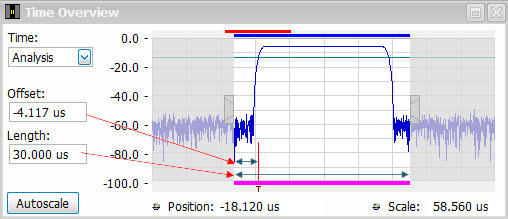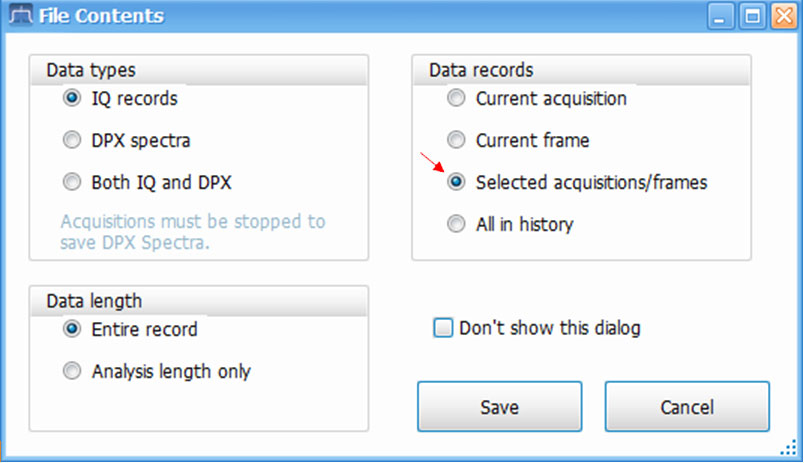

Fast Frame is a segmented memory acquisition mode designed to save memory when acquiring a large number of low duty cycle events. It is available on RSA5000, RSA6000 and RSA7000 Series realtime spectrum analyzers. A common application is with RADAR signals. RADAR signals are typically very low duty cycle – often 1% duty cycle or less. When acquiring a large number of consecutive pulses for analysis, a majority of the acquisition memory contains the IQ data of the irrelevant gap between the RF pulses of interest. This can limit the total number of pulses that can be acquired for analysis.
Fast Frame acquisition solves this problem by only storing the events of interest in memory, and not saving any data during the inter-pulse gap. However, the timing between the events of interest is maintained so that pulse-pulse measurements such as Pulse Repetition Interval, Pulse-Pulse Frequency or Phase Deviation, etc. can still be made. Fast Frame can dramatically increase the number of pulses that can fit into the acquisition memory for analysis. This post describes, in general terms, how to set up and use Fast Frame acquisitions.
The first step is to set up the acquisition to capture a single event of interest, a single RF pulse for example. This is typically done by setting up a trigger to initiate the acquisition, and adjusting the Analysis Offset and Length parameters to acquire a single RF pulse.
In this example, a simple RF Power Trigger at -13 dBm is used to initiate the acquisition:

The Analysis Offset and Length are adjusted to acquire the RF signal of interest. In this case, it is a 20 μS wide RF pulse. The most intuitive way to setup these parameters is by using the Time Overview display to adjust Analysis Offset (analysis start with respect to trigger), and Analysis Length.

The Analysis Offset and Length can also be setup in the Setup > Analysis panel (although it is less visually intuitive).

Once the RSA has been configured to trigger and acquire a single RF pulse, then the Fast Frame function can be enabled to tell the RSA how many of these acquisitions to make. This is done via the Setup > Acquire panel:

In the example above, the RSA will acquire 1000 “frames” into memory prior to processing and analyzing the results. If the RSA is setup to Single Run Mode, the single acquisition will consist of the 1000 frames of data. The Replay Control toolbar and dialog illustrates the structure of this acquisition – in the case, a single acquisition consisting of 1000 frames of data. In the Replay Toolbar, you’ll see “1:1000” which indicates that the current analysis displays reflect the 1000th frame in the 1st acquisition.

This dialog box can be used to select a subset of the frames to be analyzed using the Replay All function.
Here is an example of what the Pulse Analysis results look like when analyzing Fast Frame data. Note that the pulse-reference Phase Deviation measurement of the 10MHz LFM pulse is properly performed even though there is a “gap” in the acquired IQ data. Note that the “gap” in IQ data is indicated on the Pulse Table by the asterisk next to the Pulse Number in the first column.

When saving/exporting the IQ data, the selected Acquisitions and Frames indicated above can be used to save only those acquisitions:frames of interest in the Save As dialog box:

The use of Fast Frame for the acquisition and analysis of low duty cycle signals such as RADAR can dramatically reduce the memory requirements and the time required to analyze large numbers of low duty cycle RF events/pulses.


